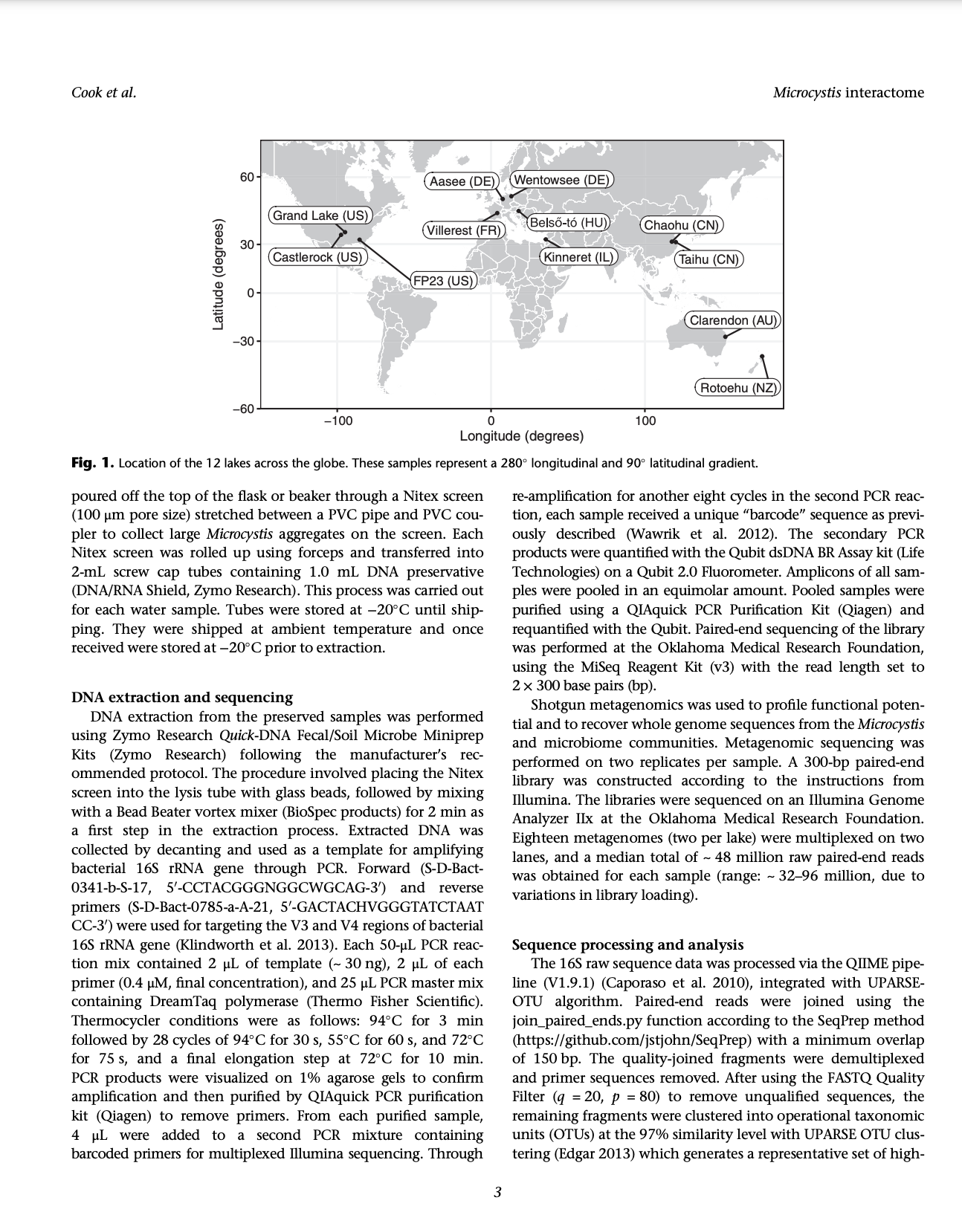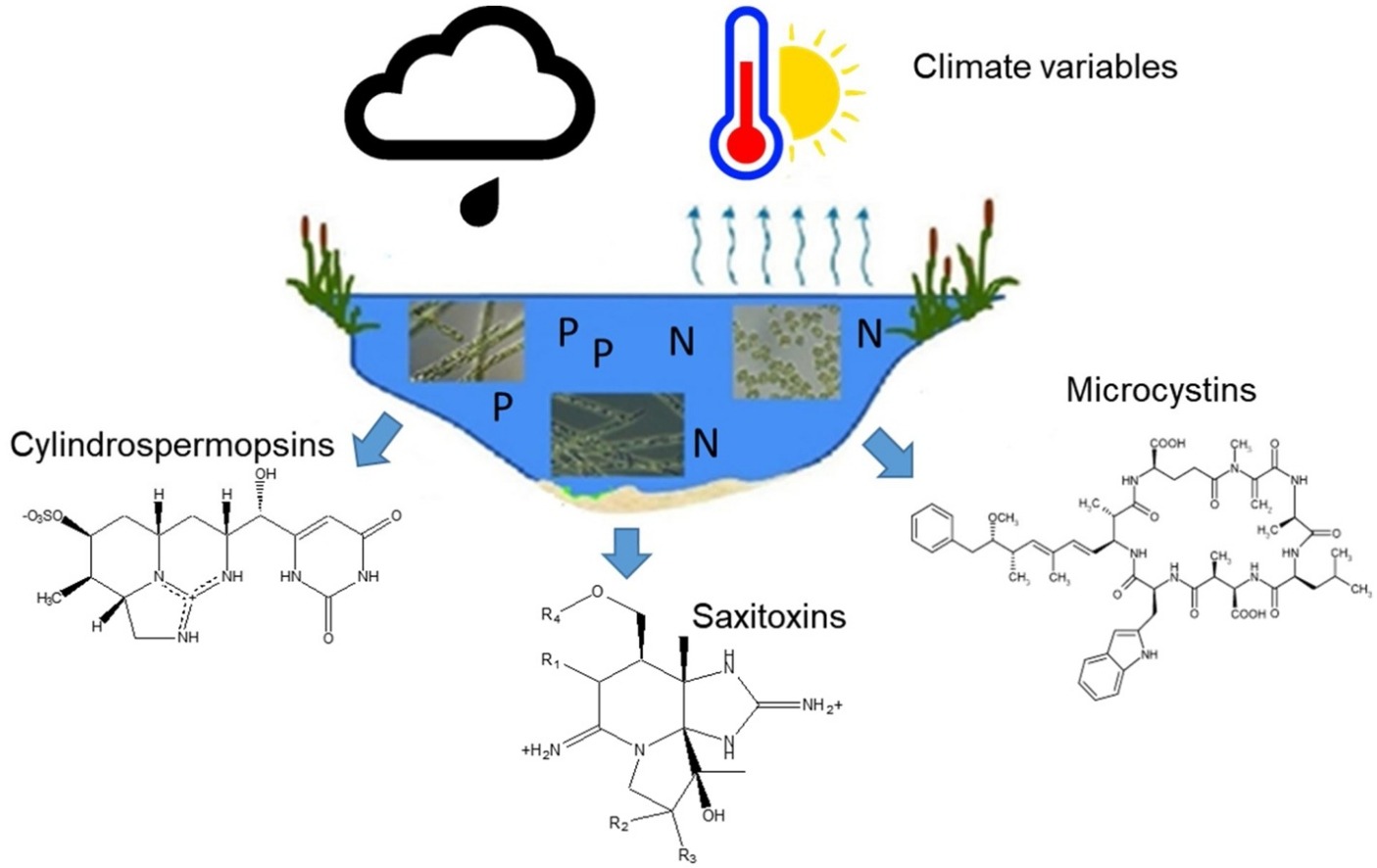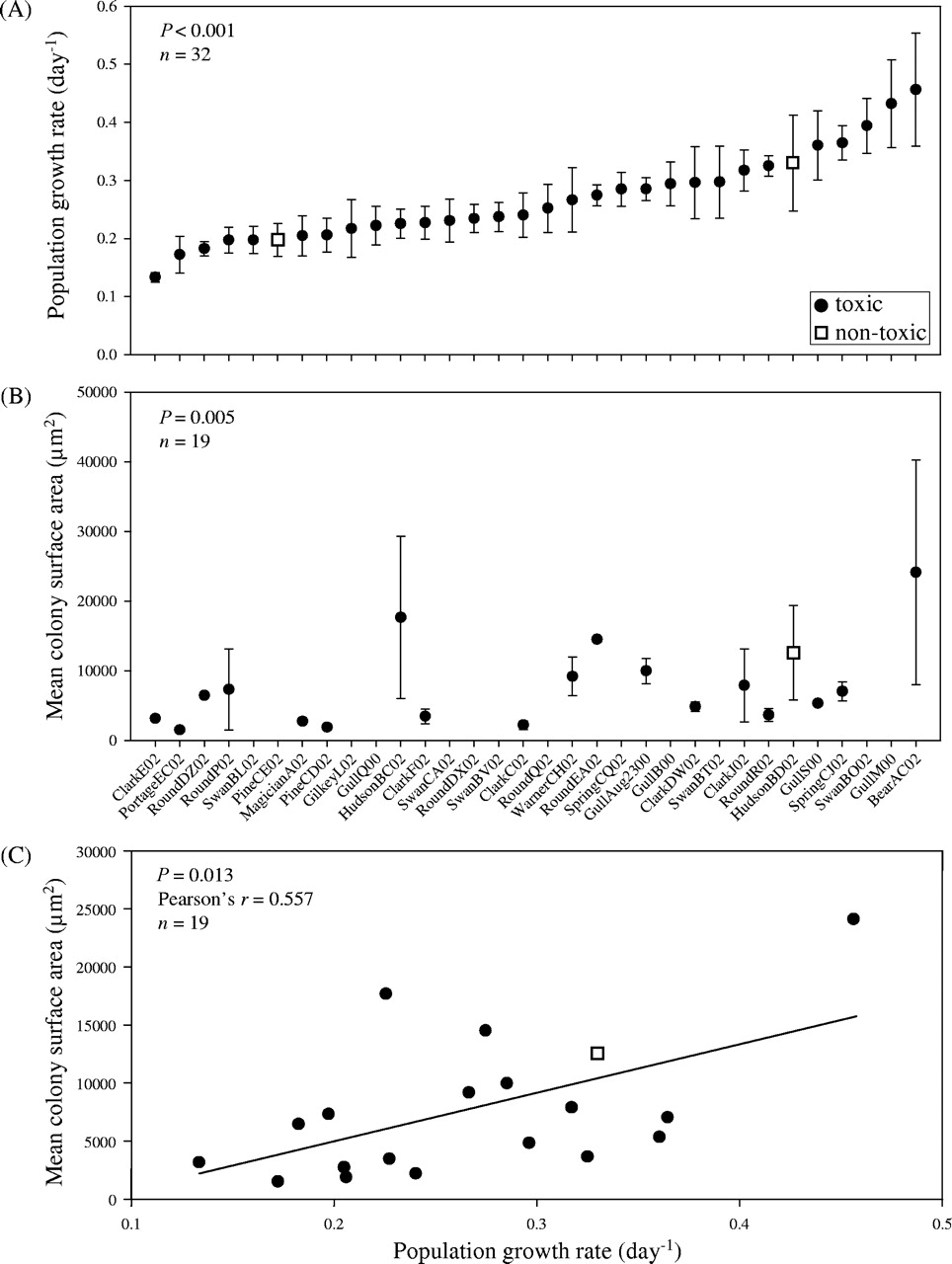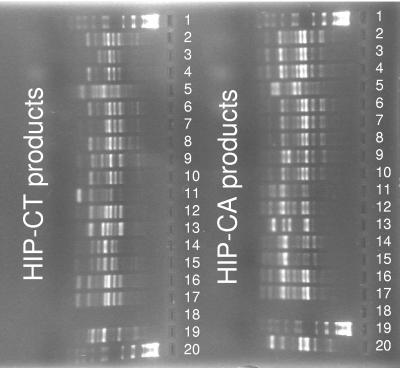Keyword: Microcystis aeruginosa

Cook, K. V., C. Li, H. Cai, L. Krumholz, K. D. Hambright, H. W. Paerl, M. Steffen, A. E. Wilson, M. Burford, H.-P. Grossart, D. Hamilton, H.-L. Jiang, A. Sukenik, D. Latour, E. Meyer, J. Padisak, B. Qin, R. Zamor, and G. Zhu. 2020. The global Microcystis interactome. Limnology and Oceanography 65:S194-S207.
Abstract
Bacteria play key roles in the function and diversity of aquatic systems, but aside from study of specific bloom systems, little is known about the diversity or biogeography of bacteria associated with harmful cyanobacterial blooms (cyanoHABs). CyanoHAB species are known to shape bacterial community composition and to rely on functions provided by the associated bacteria, leading to the hypothesized cyanoHAB interactome, a coevolved community of synergistic and interacting bacteria species, each necessary for the success of the others. Here, we surveyed the microbiome associated with Microcystis aeruginosa during blooms in 12 lakes spanning four continents as an initial test of the hypothesized Microcystis interactome. We predicted that microbiome composition and functional potential would be similar across blooms globally. Our results, as revealed by 16S rRNA sequence similarity, indicate that M. aeruginosa is cosmopolitan in lakes across a 280° longitudinal and 90° latitudinal gradient. The microbiome communities were represented by a wide range of operational taxonomic units and relative abundances. Highly abundant taxa were more related and shared across most sites and did not vary with geographic distance, thus, like Microcystis, revealing no evidence for dispersal limitation. High phylogenetic relatedness, both within and across lakes, indicates that microbiome bacteria with similar functional potential were associated with all blooms. While Microcystis and the microbiome bacteria shared many genes, whole-community metagenomic analysis revealed a suite of biochemical pathways that could be considered complementary. Our results demonstrate a high degree of similarity across global Microcystis blooms, thereby providing initial support for the hypothesized Microcystis interactome.

Barros, M. U. G., A. E. Wilson, J. I. R. Leitão, S. P. Pereira, R. P. Buley, E. G. Fernandez-Figueroa, and J. Capelo-Neto. 2019. Environmental factors associated with toxic cyanobacterial blooms across 20 drinking water reservoirs in a semi-arid region of Brazil. Harmful Algae 86:128-137.
Abstract
Cyanobacteria are known to produce a wide variety of bioactive, toxic secondary metabolites generally described as hepatotoxins, neurotoxins, cytotoxins, or dermatoxins. In Brazil, the regular monitoring of cyanobacterial toxins has intensified after the death of 65 patients in a hemodialysis clinic in Caruaru in the state of Pernambuco due to microcystin exposure. The primary objective of this study was to use multivariate statistics that incorporated environmental parameters (both biotic and abiotic) to forecast blooms of cyanobacteria and their toxic secondary metabolites in 20 drinking water reservoirs managed by the Water Treatment Company of Ceará (CAGECE) in the semi-arid region of Ceará, Brazil. Across four years (January 2013 to January 2017), 114 different phytoplankton taxa were identified, including 24 cyanobacterial taxa. In general, Ceará reservoirs were dominated by cyanobacteria due to eutrophication but also because of the dry and warm climate found throughout the region. Interestingly, specific cyanobacterial taxa were influenced by different biotic and abiotic factors. For example, nitrogen-to-phosphorus (N:P) and evaporation were positively related to saxitoxin-producing taxa, especially Raphidiopsis raciborskii, while temperature, electrical conductivity, total phosphorus, and transparency (measured as Secchi depth) were positively associated with microcystin-producing taxa, such as Microcystis aeruginosa. Climate forecasts predict higher evaporation and temperatures in the semi-arid Ceará region, which will likely magnify droughts and water scarcity as well as promote toxic cyanobacterial blooms in reservoirs in the future. Therefore, understanding the factors associated with algal blooms dominated by specific taxa is paramount for water resource management.
White, J. D., R. B. Kaul, L. B. Knoll, A. E. Wilson, and O. Sarnelle. 2011. Large variation in vulnerability to grazing within a population of the colonial phytoplankter, Microcystis aeruginosa. Limnology and Oceanography 56(5):1714-1724.
Abstract
We asked if intraspecific variation within a population of the toxic, bloom-forming phytoplankter, Microcystis aeruginosa, leads to differential vulnerability to grazing by the invasive, filter-feeding zebra mussel (Dreissena polymorpha). We performed two series of laboratory feeding experiments in which D. polymorpha were presented with several different sympatric M. aeruginosa clones in a two-species mixture with the high-quality, nutritious alga, Ankistrodesmus falcatus. Mean selectivity across M. aeruginosa clones ranged from near zero (i.e., no feeding on M. aeruginosa) to near one (equal feeding on the two algal species), evidence of maximal variation in grazing vulnerability across twenty clones of M. aeruginosa—a species assumed to be largely ‘inedible’ to grazers—from the same population. This range of vulnerability is essentially equal to that typically measured across all phytoplankton species. Large intraspecific variation in grazing vulnerability, and its ecological consequences, could influence the promotion or control of noxious blooms of toxigenic cyanobacteria.

Wilson, A. E., W. A. Wilson, and M. E. Hay. 2006. Intraspecific variation in growth and morphology of the bloom-forming cyanobacterium, Microcystis aeruginosa. Applied and Environmental Microbiology 72(11):7386-7389.
Abstract
In the laboratory, we documented large variation in the morphology, toxicity, and maximum population growth rates for 32 Microcystis aeruginosa strains isolated from 12 lakes. Growth rates and mean colony sizes varied significantly across strains and were positively correlated. However, growth rates were unrelated to toxin production.
Sarnelle, O. and A. E. Wilson. 2005. Local adaptation of Daphnia pulicaria to toxic cyanobacteria. Limnology and Oceanography 50(5):1565-1570.
Abstract
We quantified within-species variation in the tolerance of the large, lake-dwelling daphnid, Daphnia pulicaria, to toxic cyanobacteria in the diet. Juvenile growth rates on diets consisting of 100% Ankistrodesmus falcatus (a nutritious green alga) or 100% Microcystis aeruginosa (toxic) were compared for D. pulicaria clones isolated from lakes expected to have low and high levels of bloom-forming cyanobacteria during summer. Growth rates of clones isolated from high-nutrient lakes (range of total phosphorus, 31-235 °g L−1) were higher, and showed less relative inhibition, on the cyanobacterial diet compared to clones isolated from low-nutrient lakes (range of total phosphorus, 9-13 °g L-1). Our results suggest that D. pulicaria populations exposed to high cyanobacterial levels over long periods of time can adapt to being more tolerant of toxic cyanobacteria in the diet.

Wilson, A. E., O. Sarnelle, B. A. Neilan, T. P. Salmon, M. M. Gehringer, and M. E. Hay. 2005. Genetic variation of the bloom-forming cyanobacterium Microcystis aeruginosa within and among lakes: Implications for harmful algal blooms. Applied and Environmental Microbiology 71(10):6126-6133.
Abstract
To measure genetic variation within and among populations of the bloom-forming cyanobacterium Microcystis aeruginosa, we surveyed a suite of lakes in the southern peninsula of Michigan that vary in productivity (total phosphorus concentrations of approximately 10 to 100 microg liter(-1)). Survival of M. aeruginosa isolates from lakes was relatively low (i.e., mean of 7% and maximum of 30%) and positively related to lake total phosphorus concentration (P = 0.014, r2 = 0.407, n = 14). In another study (D. F. Raikow, O. Sarnelle, A. E. Wilson, and S. K. Hamilton, Limnol. Oceanogr. 49:482-487, 2004), survival rates of M. aeruginosa isolates collected from an oligotrophic lake (total phosphorus of approximately 10 mug liter(-1) and dissolved inorganic nitrogen:total phosphorus ratio of 12.75) differed among five different medium types (G test, P of <0.001), with higher survival (P = 0.003) in low-nutrient media (28 to 37% survival) than in high-nutrient media. Even with the relatively low isolate survivorship that could select against detecting the full range of genetic variation, populations of M. aeruginosa were genetically diverse within and among lakes (by analysis of molecular variance, Phi(sc) = 0.412 [Phi(sc) is an F-statistic derivative which evaluates the correlation of haplotypic diversity within populations relative to the haplotypic diversity among all sampled populations], P = 0.001), with most clones being distantly related to clones collected from lakes directly attached to Lake Michigan (a Laurentian Great Lake) and culture collection strains collected from Canada, Scotland, and South Africa. Ninety-one percent of the 53 genetically unique M. aeruginosa clones contained the microcystin toxin gene (mcyA). Genotypes with the toxin gene were found in all lakes, while four lakes harbored both genotypes possessing and genotypes lacking the toxin gene.
Sarnelle, O., A. E. Wilson, S. K. Hamilton, L. B. Knoll, and D. F. Raikow. 2005. Complex interactions between the zebra mussel, Dreissena polymorpha, and the harmful phytoplankter, Microcystis aeruginosa. Limnology and Oceanography 50(3):896-904.
Abstract
We report a reversal in the sign of the herbivore-phytoplankton interaction between the zebra mussel (Dreissena polymorpha) and Microcystis aeruginosa, a harmful planktonic cyanobacterium. A pair of large-scale manipulations of mussel density in the same lake in consecutive years showed that when phosphorus concentrations were very low (mean total phosphorus [TP] ~ 3 µg L−1), the effect of Dreissena on the biomass of M. aeruginosa was monotonically negative across the full range of sustainable mussel densities. When the enclosures were fertilized with phosphorus (mean TP ~ 9 µg L−1), there was a monotonically positive effect of Dreissena on M. aeruginosa across the same mussel gradient. These contrasting results indicate that D. polymorpha feeds on M. aeruginosa, as shown in previous laboratory feeding experiments, but that the positive effects of D. polymorpha on M. aeruginosa can be larger than the negative effects of consumption. A sign reversal in the interaction between these two species is congruent with highly variable patterns in the response of M. aeruginosa to D. polymorpha invasion across lake and river systems in North America.
Raikow, D. F., O. Sarnelle, A. E. Wilson, and S. K. Hamilton. 2004. Dominance of the noxious cyanobacterium Microcystis aeruginosa in low-nutrient lakes is associated with exotic zebra mussels. Limnology and Oceanography 49(2):482-487.
Abstract
To examine the hypothesis that invasion by zebra mussels (Dreissena polymorpha) promotes phytoplankton dominance by the noxious cyanobacterium Microcystis aeruginosa, 61 Michigan lakes of varying nutrient levels that contain or lack zebra mussels were surveyed during late summer. After accounting for variation in total phosphorus (TP) concentrations, lakes with Dreissena had lower total phytoplankton biomass, as measured by chlorophyll a and algal cell biovolume. Phytoplankton biomass increased with TP in both sets of lakes, although the elevations of the relationship differed. The percentage of the total phytoplankton comprised by cyanobacteria increased with TP in lakes without Dreissena (R2 = 0.21, P = 0.025) but not in lakes with Dreissena (P = 0.79). Surprisingly, there was a positive influence of Dreissena invasion on Microcystis dominance in lakes with TP ≪ 25 µg L−1 (P 5 0.0018) but not in lakes with TP ≫ 25 µg L−1 (P = 0.86). The finding that Microcystis, a relatively grazing-resistant component of the phytoplankton, was favored by Dreissena in low- but not in high-nutrient lakes is somewhat counterintuitive, but predator-prey models make this prediction in certain cases when the cost for the prey of being consumption resistant is a low maximum population growth rate. This Dreissena-cyanobacteria interaction contradicts well-established patterns of increasing cyanobacteria with nutrient enrichment in north-temperate lakes and suggests that the monitoring and abatement of nutrient inputs to lakes may not be sufficient to predict and control cyanobacterial dominance of Dreissena-invaded lakes.